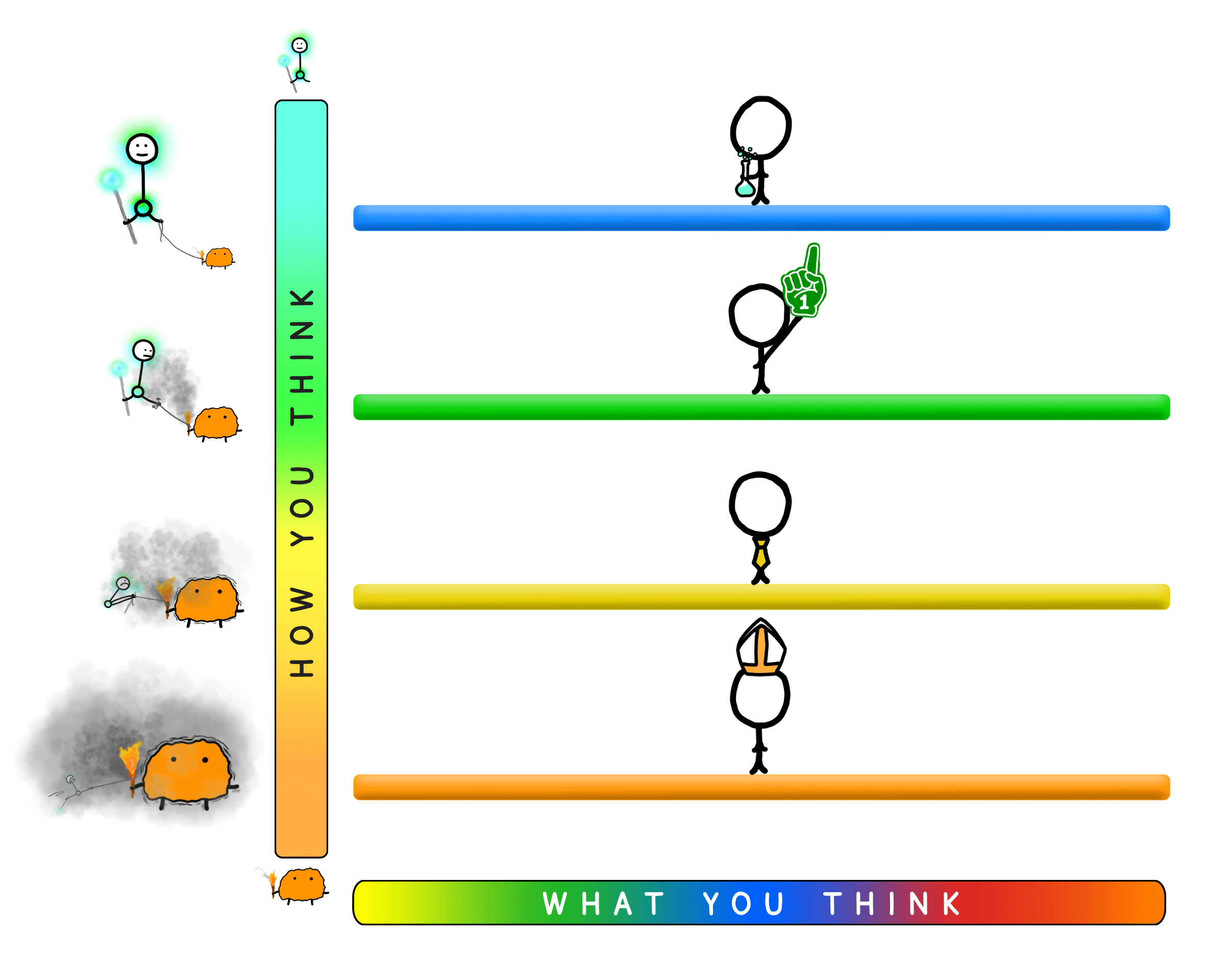On how we think
This post is inspired by Tim Urban’s book, What’s Our Problem? a self-help book for societies.
--
Our behavior is influenced by a combination of our primitive mind (limbic system) and our higher mind (prefrontal cortex). The primitive mind is concerned only with survival, while the higher mind is responsible for more complex thinking that requires effort.
When the primitive mind perceives danger, it reacts as if it's a life-or-death situation. However, it's not very good at distinguishing real danger from imagined danger. It responds to a physical attack the same way it responds to an attack on one's beliefs. In ancient times, this was sensible because adhering to the tribe's beliefs was essential for survival. But in today's world, it often leads to unwarranted aggression and hostility.
When the higher mind is able to keep the primitive mind in check, our thought processes operate in a reasonable and rational way. However, when the primitive mind takes control, our thinking becomes obstinate and tribal. How we think can be categorized into four rungs on a thinking “ladder,” based on the balance of power between the higher and primitive mind: the scientist, the sports fan, the attorney, and the zealot.

- When thinking like a scientist, the goal is to obtain knowledge and understand the truth, no matter where it takes us. That means gathering and evaluating information, forming hypotheses, and testing them without bias.
- When thinking like a sports fan, we have a clear bias and want a particular “team” of ideas to win. Yet we want the game to be played without corruption so we can say that our team won fair and square.
- When thinking like an attorney, our opinion is already formed and evidence supporting that opinion is constantly sought, while anything that contradicts it is conveniently ignored.
- When thinking like a zealot, there’s no consideration for any other opinion. Beliefs are treated as sacred ideas that must be protected, with 100% conviction.
High-rung, scientific thinking is slow and challenging, so it’s not our default mode. Particularly when beliefs become tied up with our identities, our primitive mind pulls us down to low-rung thinking. We also tend to disagree in unproductive ways using weaker forms of argument when we’re stuck in low-rung mode.
Political discussions provide a prime example. As someone who detests Donald Trump, I must admit that I'm naturally inclined to believe stories that portray him negatively, without appropriately examining their validity. However, having observed misleading behavior across the political spectrum in recent years, concepts like the thinking ladder have reminded me to be cautious before jumping to conclusions that confirm my preferred opinions.
One of the most compelling aspects of the thinking ladder is that it introduces a new, much-needed dimension to our patterns of thinking. Many of our current societal disagreements seem to stem from an overly simplistic left-right, blue versus red axis. The thinking ladder suggests that "how we think" is just as important as, if not more important than, "what we think."
The next time you meet someone with an uncomfortably different point of view, consider how they think rather than what they think before rushing to judge them. You may be surprised by what you learn.